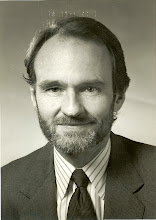In the last Update we noted that although certain sectors of the economy are showing signs of renewed health (manufacturing for example), the jobs sector continues to provide a major depressant. We also noted then that this recovery will be much slower than that from the last major recession (1982), which only took 6 months. The reason - real or perceived retardants placed on the employer by the current administration. Proposed legislation - cap-and-trade and the potential health care mandate to name just two - discourage any sane employer from hiring. Instead, they will grow more efficient, initiating a ratchet effect of sorts - a permanent reduction in needed payroll.
Let’s see where we are now. We need not be economists to understand recent releases, nor to develop our own view of where we are headed over the intermediate term.
Today we received the key Employment report for Sep activity. Jobs fell more quickly in Sep, and losses were widespread. Since the beginning of the recession, Dec/07, 7.205MM jobs have been destroyed. However, as we highlighted earlier, the pace of job loss has slowed dramatically. The worst of job deterioration is over.
We also learned that the unemployment rate notched up to 9.8% overall, and, 10.3% for males, the highest since the Depression. But key - the rate climbed because job losses overwhelmed a plunge in the labor force. We may go even higher the next month or two. Even though the media and the masses lock onto this rate, its significance is limited.
We learned that despite a weak labor market, hourly earnings are still climbing, albeit slowly. Unfortunately, the work week retreated again.(We had looked for this measure to remain unchanged) Thus the combination of the two - weekly earnings - remains weak. So we know that real consumer spending will remain constrained, and for a long while, since housing no longer provides a spark.
Finally, we learned today that Factory orders fell in Aug for the first time in 5 months. But wait. Despite this month’s decline (due to a sharp drop in orders for civilian aircraft, which soared in July) new orders have been growing over the past 3 and 6 month periods. This sector has stabilized, believe it or not, although at a lower level. The trend to remain positive.
Overall, we have an economy that is in the stage of self- correction, although of a restrained variety. Free enterprise spawns creative destruction; aside from government interference, off we go (1982). This time the threat of a tidal wave of interference rightfully dampens incentive. Any fool can see that. And further, legislation designed to spawn a recovery - the stimulus bill, is at best a wash, perhaps even a retardant. We aired this view early on; others have come to agree with us. The latest is Harvard’s Robert J. Barro. (See "Stimulus Spending Doesn’t Work," 10/01/09 WSJ opinion, by Barro and Charles Redlick.)
The culprits to a full and vigorous recovery are in full view. We have detailed these in several past posts. Anything well help folks. For example, if Congress will reassure the business community of making permanent the Bush tax cuts, this will provide a major propellant; start up costs would shrink. Or, if health and the (ludicrous) cap-and-trade measures fail, are defeated, this too will provide a propellant - the threat of higher labor costs will vaporize overnight. But as long as employers suspect that Obama is dead set on nationalizing productive resources, is pre-programmed to do so, no way they’ll look to hire. Thus, despite modest vigor in other sectors, the jobs sector will dampen, restrain any correction.
Too bad. It didn’t have to happen.
Robert Craven
Friday, October 2, 2009
Subscribe to:
Posts (Atom)
